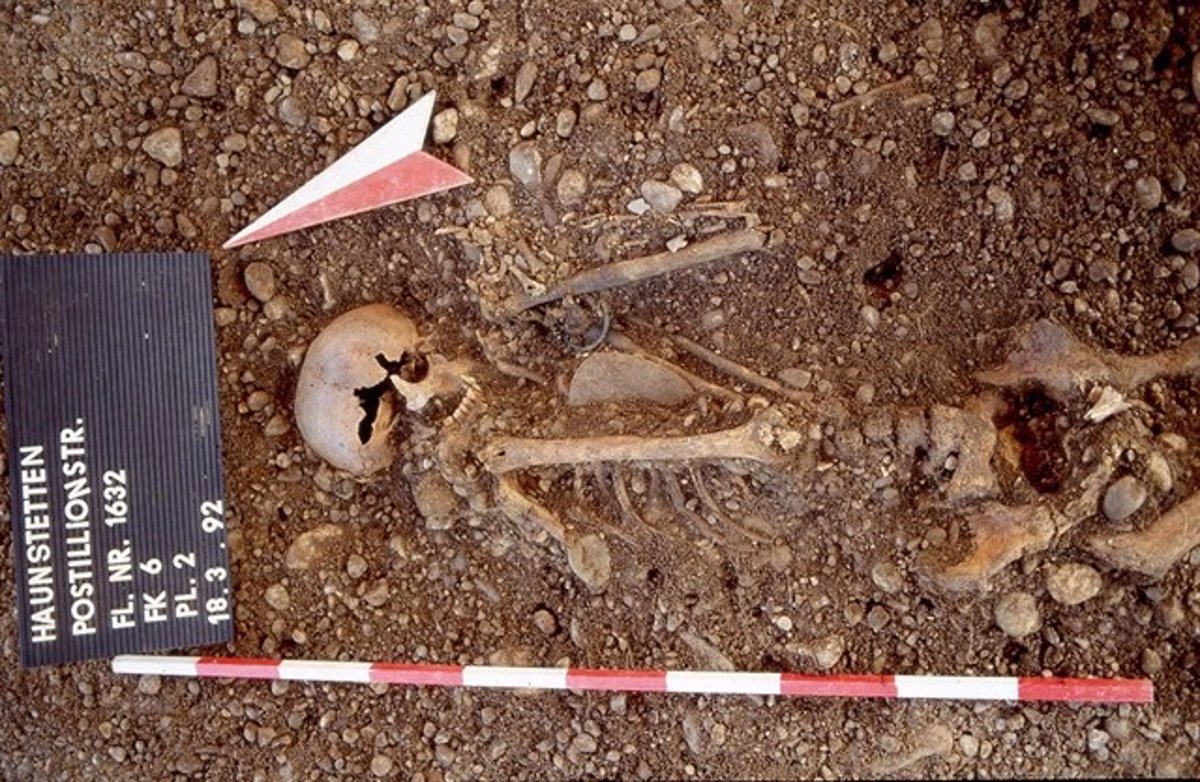MADRID, March 23 (EUROPA PRESS) –
When the first farmer moved to Europe from the Near East about 8,000 years ago they encountered and began to mix with the existing hunter-gatherer population.
Now, genomic studies of hundreds of ancient genomes from this period show more hunter-gatherer offspring in adaptive immunity genes in a mixed population than would be expected by chance.
Results, published in the journal ‘Current Biology’suggested that mixing between the two groups gave rise to the mosaic of genetic variation that forms the basis of natural selection, the process by which all organisms, including humans, adapt and change over time.
Changes in immune genes appear in the major histocompatibility complex (MHC) region, a group of genes that encode cell surface proteins and helps our immune system recognize pathogens. The researchers also detected more farmer ancestry in a gene called SLC24A5, which is involved in skin pigmentation.
“This tells us that this region of the genome underwent natural selection. says Tom Davy of the Laboratory of Ancient Genomics at the Francis Crick Institute in London, England. The genetic variant carried primarily by hunter-gatherers in the CMH region and by farmers in SLC25A5 is increasing in frequency in the offspring population.”
In recent years, the study of ancient genomes has allowed scientists to travel back in time to trace the evolution of humans and other organisms. While most studies of ancient DNA focus on archaeological questions, Davy and Pontus Skoglund of the Francis Crick Institute and Iain Mathieson and colleagues at the University of Pennsylvania recognize that the increasing availability of standardized data and the sharing of ancient genomes it now allows us to ask new questions about natural selection and human adaptation in prehistory.
They analyzed the genomic DNA of 677 individuals from Mesolithic and Neolithic Europe. Their aim was to look for hereditary aberrations in the genomes of mixed individuals and to see if these aberrations arose as a result of natural selection, not random change.
Their analysis revealed that pigmentation-related genes were the most abundantly represented in local Neolithic ancestors. In contrast, the mixed group retained more genes from important hunter-gatherer MHC immune loci.
These findings can only reflect the advantages of having more diversity in immune responses, the researchers said. On the other hand, hunter-gatherer CMH alleles are positively selectable. because they facilitated greater survival and adaptation to pathogens in the Neolithic group.
Although other factors may be involved, the results highlight that immune function is a major target of natural selection in late Stone Age populations. The researchers say that the hunter-gatherer’s representation of increased immunity surprised them.
“It has long been thought that an agrarian lifestyle promotes immunological adaptations due to higher residential densities, new diet and closeness to cattleSkoglund explained.
“As agricultural groups spread from the Near East to Europe and intermingled with local hunter-gatherers, the natural prediction was that farmer’s immunity genes would be better suited to the agricultural lifestyle and thus selected for – “However, we saw the opposite, that the ancestral hunter-gatherers enriched in the MHC immune locus.”
As he points out, “this could be due, for example, to the fact that hunter-gatherers were already adapted to pathogens found in Europe, Or it could be the result of natural selection favoring a diversity of immune genes.”
Regarding pigmentation changes, previous studies have also shown selection for reasons that are not fully understood. “One hypothesis is that lighter skin pigmentation allows farmers to synthesize more vitamin D from ultraviolet radiation, while hunter-gatherers were able to get enough vitamin D from their food.” said Mathieson.
Taken together, the new studies for the first time extend recent findings about adaptive mixing in the MHC region to selection in Stone Age human populations. The researchers say the discovery of increased diversity at the CMH locus opens new avenues for understanding the adaptations that accompany the shift to an agricultural lifestyle, which they say it is a fundamental transition that has occurred throughout the world throughout human history.
“This study reveals natural selection during the agricultural transition in one region of the world, Europe, but other regions are not well understood. Future studies of ancient DNA may also address the extent to which immunity is a prime target as well,” said Skoglund. at another period of environmental and lifestyle change during human evolution.”

“Entrepreneur. Internet fanatic. Certified zombie scholar. Friendly troublemaker. Bacon expert.”







